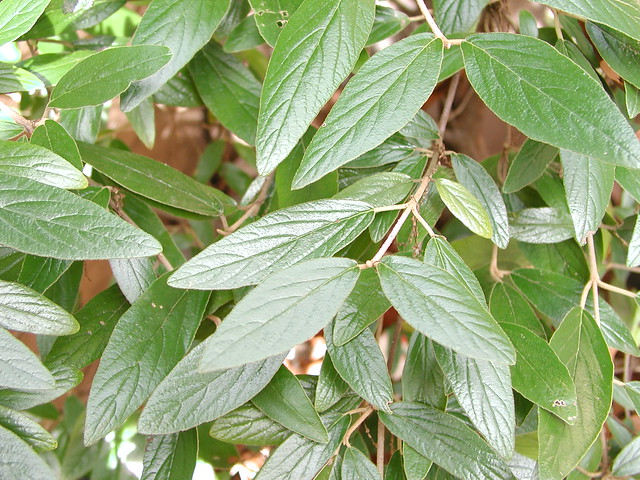Resource Library
Plant of the Week: Viburnum Leatherleaf Viburnum look-alikes
Impatience is a character flaw amongst us gardeners: we do stupid things like plant shrubs that will grow too large as foundation plants or crowd things together so they don’t have much of a chance of showing their worth. Add look-alike plants to the mix that grow different sizes and things get complicated. Leatherleaf viburnums (Viburnum rhytidophyllum) and a couple look-alike plants are good examples of the need to know specifics before planting.
Leatherleaf viburnum is a large, coarse-leafed, multi-branched evergreen shrub that grows 15 feet tall and wide with a mounded form. It has lustrous evergreen leaves that are rough-textured and to 6 inches long and 2 inches wide. In the summertime the leaves lie flat but in winter they roll inward along their length and take on a bit of a purplish cast.
Flower buds are produced terminally in late summer and resemble a small, open cauliflower head. In mid spring these open and produce a head of slightly fragrant flowers to 5 inches across, festooned with numerous blossoms. In late summer red turning to black, it produces peanut-sized berries in dense clusters. Overall, the flower and fruiting effect, though ornamental, isn’t exactly satisfying.
Viburnum x rhytidophylloides, which in references is called the Lantanaphyllum viburnum, is a look-alike and sound-alike plant that may be more common in nurseries in the mid”south than Leatherleaf viburnum. This hybrid species resulted from crossing Leatherwood viburnum with V. lantana and has the overall form of its parent but is only about 10 feet tall and wide. It is evergreen in north Arkansas but tends to drop more leaves in a bad winter than the Leatherleaf viburnum. Leaves are slightly broader and not as rough textured as Leatherleaf viburnum and the overall flowering effect is a bit nicer.
Prague viburnum (V. x “Pragense”) is a 1955 hybrid that originated in Prague where it was selected for its superior cold hardiness. It grows in an upright oval form to 10 feet tall with more narrow, willowy leaves than the previous two plants. It is perhaps the least common of the big evergreen viburnums but is, in my view, the most attractive of the set.
All of these large evergreen viburnums need room to grow and develop so only plant them where they have ample room. If you have a large landscape and want to hide a travel trailer or ugly outbuilding they are a good choice or they can function well as background shrubbery with other, more refined broadleaf evergreens. They are not suited for use as foundation plants. Fruit set is usually better when several kinds of viburnums are planted together to help assure pollination.
The most freeze tender of the group, the Leatherleaf viburnum, is top hardy to about -15 with the other two somewhat more tolerant. They are generally considered safe in zones 5-8. These viburnums will grow in sun or moderate shade but are more open in the shade. Once established they have good drought tolerance. Size can be maintained by occasionally cutting the plants back hard in early spring and regrowing the top.
For more information about horticulture or to see other Plant of the Week columns, visit Extension's Web site, www.uaex.uada.edu, or contact your county extension agent. The Cooperative Extension Service is part of the U of A Division of Agriculture.
Pursuant to 7 CFR § 15.3, the University of Arkansas System Division of Agriculture offers all its Extension and Research programs and services (including employment) without regard to race, color, sex, national origin, religion, age, disability, marital or veteran status, genetic information, sexual preference, pregnancy or any other legally protected status, and is an equal opportunity institution.
